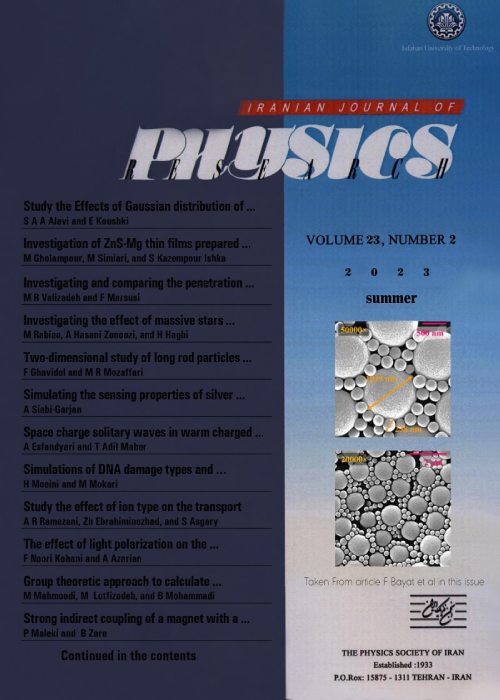Path Integral Methods for Single Band Hubbard Model
Author(s):
Abstract:
We review various ways to express the partition function of the single-band Hubard model as a path integral. The emphasis is made on the derivation of the action in the integrand of the path integral and the results obtained from this approach are discussed only briefly. Since the single-band Hubbard model is a pure fermionic model on the lattice and its Hamiltonian is a polynomial in creation and annihilation fermionic operators, with the help of the fermionic coherent states of holomorphic representions the partition function of the model can be straightforwardly expressed as a path integral with respect to Grassmann fields. Then the question arises how to calculate this path integral specially in the most interesting case of the strong coupling, which is described by the term quartic in the fermion fields. The standard way to get rid of this quartic term is to use so-called Hubbard-Stratonovich transformation by introducing auxilary boson field (this procedure is usually called bosonization). Since there are several equivalent forms of the interaction term in the single-band Hubbard model the bosonization procedure is not unique. In the first section of the article we discuss two types of bosoniztions one with two real scalar fields (charge and spin fields) and another with a real vector field. The second section is devoted to a spin-rotation-invariant bosonization procedure invented by Schulz and Weng, Ting and Lee, where an arbitary quantization axis is introduced at each point in space and time and an integration over all possible orientations enters the path integral measure. Spin rotation invariant formulation is necessary to study e.g. spiral magnetization. In the third section we present the contstruction of a path integral for the partition function when the single-band Hubbard Hamiltonian is written in terms of the Hubbard operators, which are elements of the doubly graded semi-simple algebra. In this case one should use generalized coherent states for superalgebra in order to get a path integral formulation. We follow the procedure proposed recently by T ngler and Kopp, to investigate the case of strong coupling.
Language:
Persian
Published:
Iranian Journal of Physics Research (IJPR), Volume:1 Issue: 2, 1997
Page:
71
magiran.com/p823335
دانلود و مطالعه متن این مقاله با یکی از روشهای زیر امکان پذیر است:
اشتراک شخصی
با عضویت و پرداخت آنلاین حق اشتراک یکساله به مبلغ 1,390,000ريال میتوانید 70 عنوان مطلب دانلود کنید!
اشتراک سازمانی
به کتابخانه دانشگاه یا محل کار خود پیشنهاد کنید تا اشتراک سازمانی این پایگاه را برای دسترسی نامحدود همه کاربران به متن مطالب تهیه نمایند!
توجه!
- حق عضویت دریافتی صرف حمایت از نشریات عضو و نگهداری، تکمیل و توسعه مگیران میشود.
- پرداخت حق اشتراک و دانلود مقالات اجازه بازنشر آن در سایر رسانههای چاپی و دیجیتال را به کاربر نمیدهد.
In order to view content subscription is required
Personal subscription
Subscribe magiran.com for 70 € euros via PayPal and download 70 articles during a year.
Organization subscription
Please contact us to subscribe your university or library for unlimited access!


